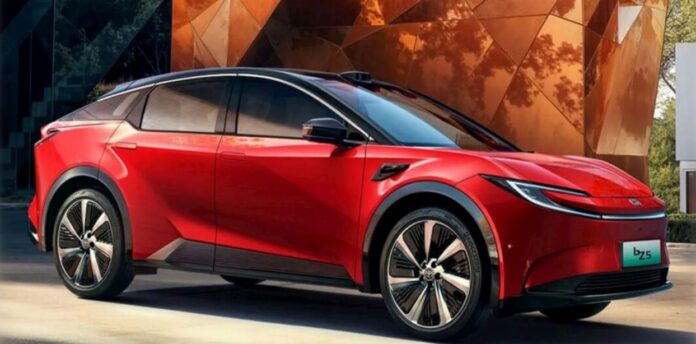SiC Power Devices Driving the Next Wave of EV Innovation
The role of silicon carbide (SiC) technology in electric vehicles (EVs) is becoming increasingly vital. Known for their superior efficiency and thermal performance compared to traditional silicon-based components, SiC devices are transforming power electronics, especially in traction inverters and onboard chargers. Major players like Tesla, Hyundai, and BYD have already embraced SiC to improve range and performance. Now, Toyota joins the movement with the launch of its new battery electric vehicle (BEV). The bZ5 leverages ROHM Semiconductor’s cutting-edge SiC MOSFETs. This strategic step underlines how critical SiC is to the next generation of high-performance, long-range electric vehicles.
Toyota bZ5 Integrates ROHM SiC for Extended Range and Performance
Toyota’s new crossover BEV, the bZ5, launched in June 2025 in China. bZ5 incorporates ROHM’s 4th-generation SiC MOSFET bare chips into its traction inverter. Developed collaboratively by Toyota, FAW Toyota, and BTET (a BYD-Toyota joint venture), the bZ5 aims to cater to Generation Z drivers with a tech-savvy, stylish vehicle that delivers up to 630 km of range (CLTC). The use of SiC technology directly contributes to this impressive efficiency, enhancing both range and dynamic performance. The mass production of these power modules has begun through HAIMOSIC (Shanghai) Co., Ltd.. This is a joint venture between ROHM and Zhenghai Group.
ROHM’s SiC Strategy Aligns with Sustainable EV Development
ROHM’s involvement goes beyond a single vehicle project. The company is rapidly advancing its roadmap, aiming to launch 5th, 6th, and even 7th generation SiC MOSFETs. By investing in production lines and expanding module formats — from bare chips to fully packaged modules — ROHM is working to meet the global demand for energy-efficient EV components. Their commitment supports not just Toyota’s goals, but also a wider shift across the automotive industry toward sustainable and high-performing EV systems.
Boosting the Chinese EV Market with Localized Innovation
The HAIMOSIC venture highlights how localized production and collaboration are key to scaling EV technology in high-demand markets like China. With a capacity to produce 360,000 SiC modules annually and robust R&D backing, HAIMOSIC stands as a crucial pillar in this electric transition. The bZ5’s success will likely drive further interest in SiC solutions across the Chinese and global EV landscape. As more automakers follow suit, ROHM’s role in enabling future-ready electric vehicles will become even more prominent.







